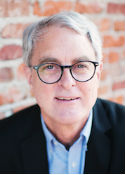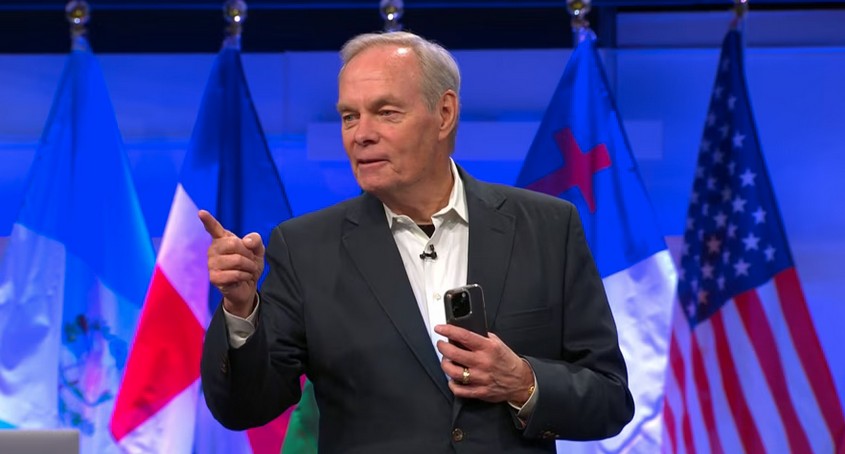While the United States remains shaped by Christianity, the faith’s influence—particularly as a force in American politics and culture—is slowly waning. An increasing number of religiously unaffiliated, a steady drop in church attendance, the recent Supreme Court decision on same-sex marriage, and the growing tension over religious freedoms all point to a larger secularizing trend sweeping across the nation.
But how do the numbers stack up? Is America, home to the largest Christian population in the world, actually becoming a “post-Christian” nation? In a recent study, Barna Group analyzed 60,808 interviews conducted over a seven-year period to measure irreligion in American cities. Currently, 78% of Americans describe themselves as “Christian,” but in order to dig deeper than just self-affiliation, Barna Group looked at a variety of key faith indicators for both belief and practice.
To measure a person’s level of irreligion, Barna Group tracks 15 metrics related to faith (you can find the full list of 15 at the end of the article). These factors speak to the lack of Christian identity, belief and practice. These factors include whether individuals identify as atheist, have never made a commitment to Jesus, have not attended church in the last year, or have not read the Bible in the last week.
These kinds of questions—compared to ticking the “Christian” box in a census—get beyond how people loosely identify themselves (affiliation), and get to the core of what people actually believe and how they behave as a result of their belief (practice). These indicators give a much more accurate picture of belief in America.
To qualify as “post-Christian,” individuals had to meet 60% or more of the factors (nine or more out of 15 criteria). “Highly post-Christian” individuals meet 80% or more of the factors (12 or more of these 15 criteria).
Where Are We as a Nation?
Whether one believes this decline of “Christian America” calls for a time of lament, or presents great opportunity (or both) for the church, one cannot help but accept the changing landscape. In just two years, the percentage of Americans who qualify as “post-Christian” rose by 7 percentage points, from 37% in 2013 to 44% in 2015. Across the United States, cities in every state are becoming more post-Christian—some at a faster rate than others
The Top 15 “Post-Christian” Cities
As was the case in 2013, the religiously unaffiliated and unchurched are concentrated in New England and the Northeast. Touted as the foundation and home-base of religion in America, and a region that often sets the political tone of the nation, New England dominates the post-Christian metrics, claiming five of the top 10 most post-Christian cities, including Boston, MA (65%), Providence, RI (60%), and Portland, ME (60%), with eight of the top 10 in the greater Northeast region.
The West coast is also fairly well represented among the top 15 cities, with San Francisco, CA (66%) climbing up the rankings from 6th place in 2013 to top the list as the most post-Christian city in America, and Los Angeles, CA (54%) coming in at 15th place. But other West coast cities like San Diego, CA (50%), and Portland, OR (51%) actually dropped out of the top 15 from 2013, either because of a decrease or minimal increase in post-Christian metrics compared to 2013. Other outgoing cities include Denver, CO (52%), and Cedar Rapids, IA (51%).
Newcomers to the top 15 cities include Las Vegas, NV (59%), Fort Myers-Naples, FL (56%), Chicago, IL (54%), and Los Angeles, CA (54%). These markets, and many others saw a higher than average increase, Las Vegas being a striking example, with an increase of 16 points over 2013. Boston, San Francisco, and Chicago all have similarly strong growth in their post-Christian populations, with increases of 12 to 13 percentage points in each city.
Post-Christianity by Region
The county’s largest cities are a mixed bag with northern cities like New York (59%), Chicago (54%) and Philadelphia (54%), all shooting up the rankings compared to their 2013 spots. But southern cities like Houston (40%), Phoenix (51%), San Antonio (35%), and Dallas (32%) all dropped an average of 10 spots in the post-Christian rankings compared to their 2013 position. In most cases, the percentage of post-Christian residents did not change much in those cities.
The South and Midwest have both lower comparative, and slower rates of post-Christian growth. This is inline with these regions’ typically higher rates of church attendance and self-identified Christians.
Cities like Birmingham, AL grew only slightly from a post-Christian population of 16% in 2013 to 18% in 2015. This is a similar story with cities across the South and Midwest like Nashville, TN (23%), Charlotte, NC (25%), Dallas/Ft Worth, TX (32%) and Columbus, OH (46%). These are all cities that have—and maintain—a much lower percentage of post-Christian individuals.
Where does your city rank?
Post-Christian Metrics
To qualify as “post-Christian,” individuals had to meet 60% or more of the following factors (nine or more). “Highly post-Christian” individuals meet 80% or more of the factors (12 or more of these 15 criteria).
- Do not believe in God
- Identify as atheist or agnostic
- Disagree that faith is important in their lives
- Have not prayed to God (in the last year)
- Have never made a commitment to Jesus
- Disagree the Bible is accurate
- Have not donated money to a church (in the last year)
- Have not attended a Christian church (in the last year)
- Agree that Jesus committed sins
- Do not feel a responsibility to “share their faith”
- Have not read the Bible (in the last week)
- Have not volunteered at church (in the last week)
- Have not attended Sunday school (in the last week)
- Have not attended religious small group (in the last week)
- Do not participate in a house church (in the last year)
A native New Yorker, George Barna has filled executive roles in politics, marketing, advertising, media, research and ministry. He founded the Barna Research Group (now The Barna Group) in 1984 and helped it become a leading marketing research firm focused on the intersection of faith and culture. The company has served several hundred parachurch ministries and thousands of Christian churches throughout the country. It has also supplied research to numerous corporations and non-profit organizations, as well as to the U.S. Navy and U.S. Army.
To date, Barna has written 48 books, mostly addressing leadership, trends, church health and spiritual development. They include best-sellers such as Revolution, Transforming Children into Spiritual Champions, The Frog in the Kettle, and The Power of Vision. His most recent book is Revolutionary Parenting. Several of his books have received national awards. He has had more than 100 articles published in periodicals and writes a bi-weekly research report (The Barna Update) accessed by more than a million people each year, through his firm’s website (www.barna.org). His work is frequently cited as an authoritative source by the media. He has been hailed as "the most quoted person in the Christian Church today" and has been named by various media as one of the nation’s most influential Christian leaders.
He is a popular speaker at ministry conferences around the world and has taught at Pepperdine and Biola Universities and several seminaries. Barna served as a pastor of a large, multi-ethnic church and has been involved in several church start-ups.
After graduating summa cum laude from Boston College, Barna earned two Master's degrees from Rutgers University. At Rutgers, he was awarded the Eagleton Fellowship. He also received a doctorate from Dallas Baptist University. He lives with his wife (Nancy) and their three daughters (Samantha, Corban, Christine) in southern California. He enjoys reading novels, watching movies, playing guitar, and relaxing on the beach.




